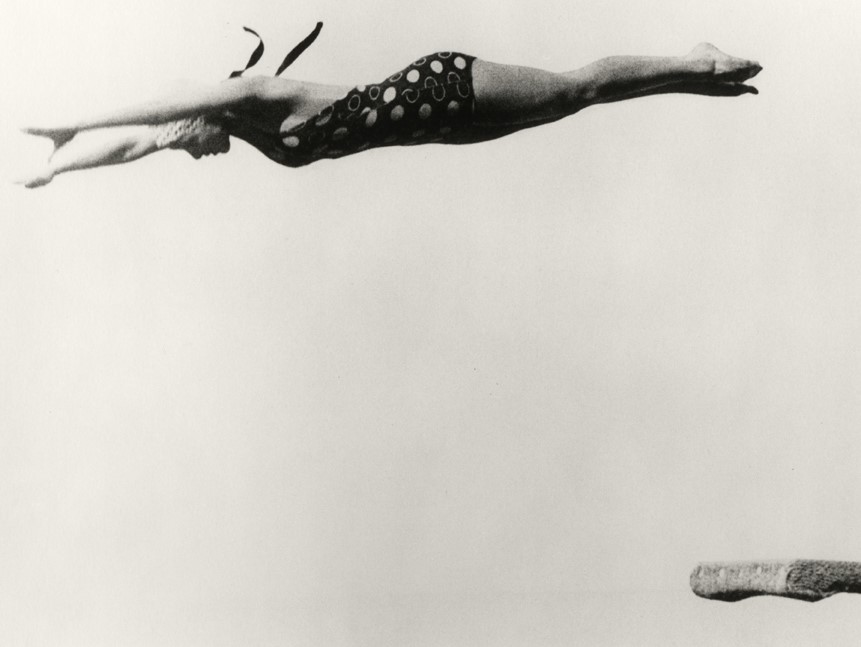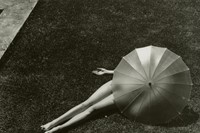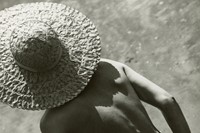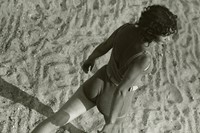He was the Hungarian photographer who played a pivotal role in fashion imagery – asking his models to exchange their posed positions for the movement and life now considered customary – and yet Martin Munkácsi is relatively - and unjustifiably -
He was the Hungarian photographer who played a pivotal role in fashion imagery – asking his models to exchange their posed positions for the movement and life now considered customary – and yet Martin Munkácsi is relatively – and unjustifiably –unknown outside of his field. This is all set to change with a long overdue outing of his work in the exhibition Eye Witness: Hungarian Photography in the 20th Century, at the Royal Academy this summer.
Born in 1896 under the empire of Austro-Hungary, Munkácsi's first encounter with photography came when working as a sports journalist for the newspaper Az Est (The Evening) he was expected to provide the accompanying images. Capturing subjects which were incapable of remaining in fixed positions, the photographer adopted a principle which he would later apply to his fashion work and became his forte. “Never pose your subjects”, he recommended. “Let them move about naturally”.
Aged 31, Munkácsi relocated to Berlin and was rewarded with photography assignments ranging from the German airship Graf Zeppelin to Greta Garbo’s legs from beneath a striped umbrella. By that point it was 1927 and soon after documenting the scene in Potsdam where Hitler was handed Germany in 1933, Munkácsi, who was of Jewish descent – his surname Mermelstein was changed by his father early on – left for New York to pursue what was to be a fashion photography career of groundbreaking and influential proportions.
Applying what he had learnt early on in his career, Munkácsi challenged conventionality, but perhaps unintentionally so. He appeared to do simply as he had always done, searching for humanity in his subjects and behaving as if clothes came secondary. But they never did. Carmen Snow, then editor of Harper’s Bazaar realised this after she observed the photographer at work. Instructing swimwear model Lucile Brokaw to run along the sea front, Munkácsi’s camera captured the genuine exhilaration on her face, her cape billowing behind her – a sense of realism that was until then deemed irrelevant to fashion. Immediately she propositioned him with a job, which he took a year later upon his return to New York. Confirming his ingenuity in her memoir, Snow wrote, “This was never done before. This was the first big innovation I introduced to Harper’s Bazaar”. Echoing his editor’s admiration, his colleague at the publication, photographer Richard Avedon, said Munkácsi transformed what was once a “…joyless, loveless, lying art”.
There were many highlights at Harper’s. One in particular was taking the magazine’s first nude shots – his most famous, an image of a woman in a straw hat elegantly leaning forward and exposing her naked back to the lens. He also shot for Life and Ladies Home Journal and widespread exposure of his work meant he soon caught the attention of Hollywood.
“A picture is not worth a thousand words, it’s worth a thousand bucks” he is quoted as saying. And despite earning a reported $100,000 in 1936 and living a life of comparative luxury, in 1939 Munkácsi’s career came to a premature end. After battling with divorce, twice, as well as the death of his daughter and ill health, his work reflected the strain and his contracts were never renewed. He died of a heart attack in 1963 at the age of 67. Much of his work was lost and only recently recovered.
It should be of some consolidation to Munkácsi that according to Henri Cartier-Bresson, the painter whom Munkácsi inspired to turn to photography, his work achieved permanence long before he died. Referring to an image of three children running into the sea, he said, “I must say that it is that very photograph which was for me the spark that set fire to fireworks…it made me realise that photography could reach eternity through the moment”.
Showcasing the work of Brassaï, Robert Capa, André Kertész, László Moholy-Nagy and Martin Munkácsi, Eye Witness: Hungarian Photography in the 20th Century runs at the Royal Academy until October 2, 2011.
Text by Fiona Cook



